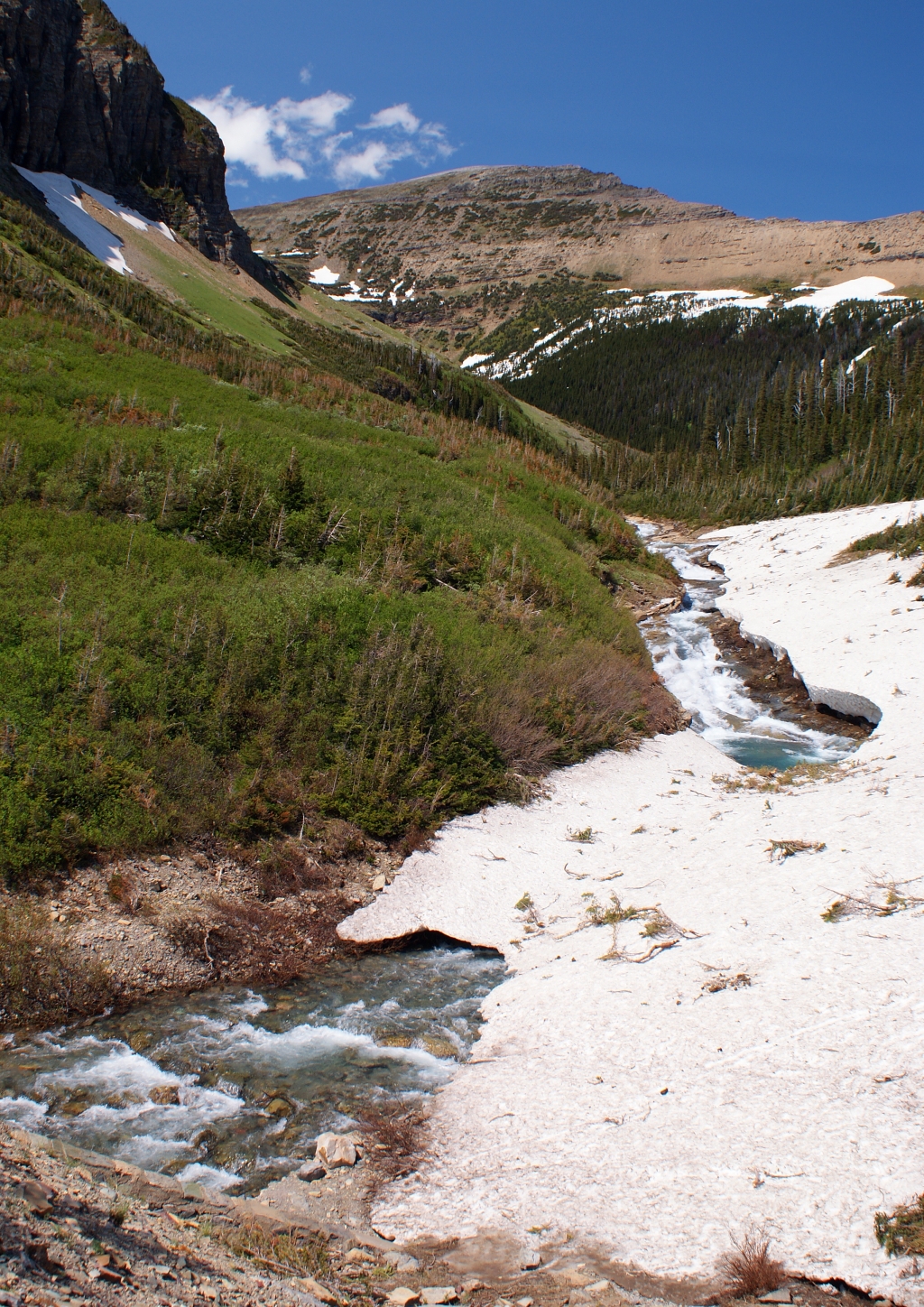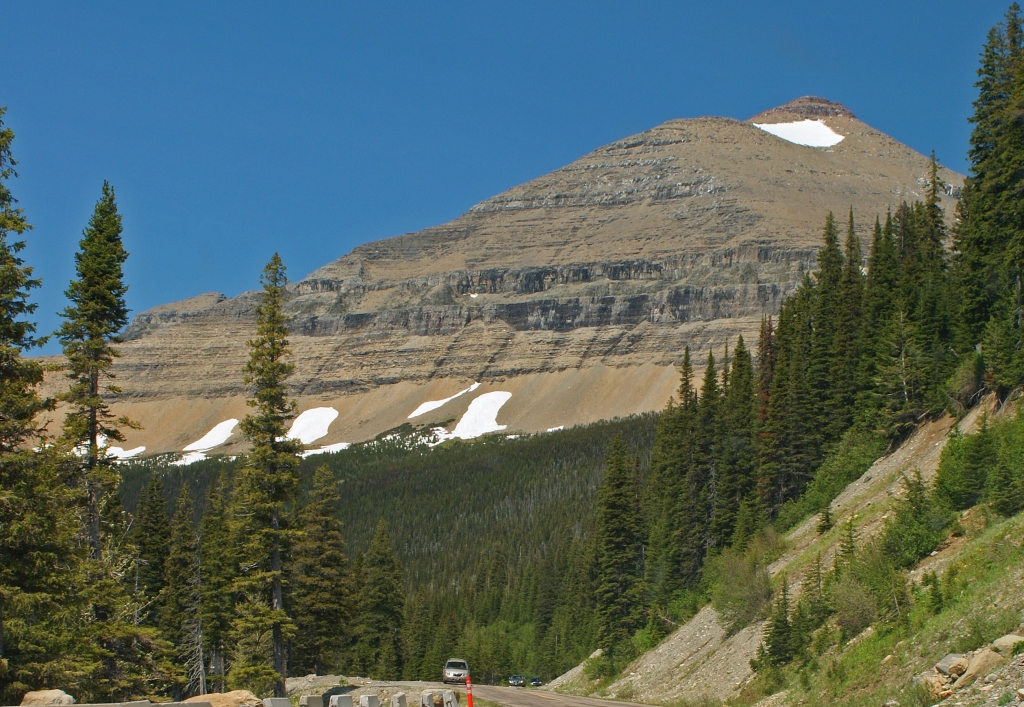 |
| Cannon Mountain left and Heavens Peak behind the pine. This was taken from the blind lookout. |
 |
| Oberlin Mountain from Loop Lookout. |
 |
| Blind Lookout: Oberlin Mountain with Bird Woman Falls. |
 |
| Livingston Range from the blind lookout. |
I did find a cutout on the mountain side to stop and got some great pictures of Oberlin Mountain, Heavens Peak, Cannon Mountain and a panoramic shot of Livingston Mountain Range. The cutout was located on a bend that made it tricky to get back on the road since you are blind to traffic coming in both directions. While I was taking pictures a camper pulled over and almost got hit pulling out. A construction vehicle was slowly navigating through the blind turn and the camper driver could not see it. I kept yelling "STOP!" but the camper kept inching forward a little each time. You should have seen the surprise on his face when he finally saw the trunk and his wife mouthed "Thank You" to me before departing.
 |
| The mapped routes before choosing the finally "Going-to-the-Sun Road". |
 |
| Heavens Peak from the Loop Lookout. |
 |
| A burned area above the Loop. Later in the summer this area is filled with blooming fireweed. |
The next stop was Logan Creek where I photographed an abandon Park Ranger's Cabin before entering the second construction zone from Logan Creek to Avalanche Creek.
 |
| Old ranger's cabin on Logan Creek. Oberlin Mountain is towering in the center with Bird Woman Fall below it. |
 |
| Stanton Mountain Front Center and Mount Vaught center rear framed with leaves. |
 |
| Stanton Mountain Front Center and Mount Vaught center rear framed with birch trees. |
The turnouts were filled with cars and it was getting late so I skipped Avalanche Creek and McDonald Creek Lookouts. I found a turnout along McDonald Lake to stop and enjoyed the beautiful lake along with some great shots of a mountain framed in the trees.
 |
| McDonald Lake: Mount Vaught left behind the pine. Cannon Mountain right peak and Mount Brown is left of Cannon. The mountains in the background I seen referred to as the highline. |
 |
| McDonald Lake with the Apgar Mountains in the background. |
 |
| My campsite for the night. |
































